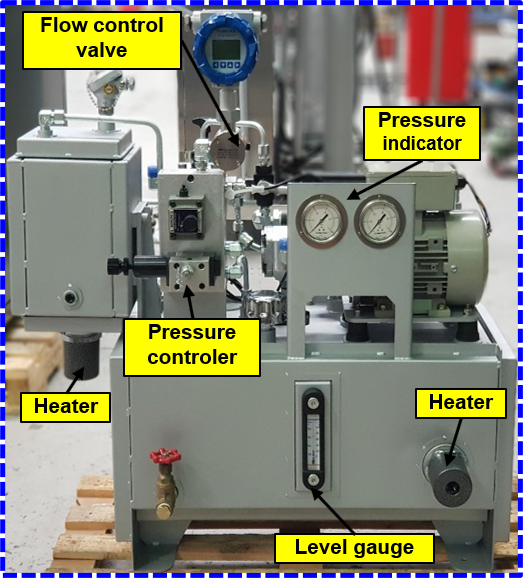MEDVIC 연구실
MEchanical Design and VIbration Control
Research
- HOME
- Research
- Squeeze Film Damper
Squeeze Film Damper
A squeeze film damper (SFD) is a lubricated element that adds viscous damping by adding an oil film between the outer ring of the bearing and the cartridge, thereby reducing the vibration displacement caused by the unbalanced mass of the rotor and suppressing rotordynamic instability. Accordingly, it is mainly used in rolling element bearings that have no damping at all, such as aircraft engines and turbochargers. The damping characteristics of the SFD are greatly affected by the system design geometry and operating conditions.
Fig. 1 shows a cross-sectional schematic diagram the SFD for the open-end geometry(SFDo) and the closed-end geometry (SFDp). The SFD consists of a thin oil film(squeeze film) created by injecting oil into the thin lubricating clearance between the outer ring of the rolling element bearing and the cartridge, and an anti-rotation pin inserted to suppress the possibility of rotation of the bearing outer ring when the rotor rotates.

Fig. 1. Schematic view of squeeze film damper(SFD) with open ends (SFDo) and piston ring seal ends (SFDp).
Fig. 2 shows a photograph of the SFD single-component evaluation experimental device. The SFD single-component evaluation experimental device mainly consists of the SFD test part, shaker, and static loader. The test part has a flexible support rod with a certain stiffness that supports the cartridge. In addition, the journal is assembled in a form that is concentric with the cartridge and connected to a heavy mass supporter and fixed. It is possible to experiment with open-end and piston ring sealed-end SFD by changing the journal. The electromagnetic shaker located in the X and Y directions centered on the test part can excite the cartridge with a thin support rod (stinger) connected to it at the desired frequency and amplitude. The static load device located in the ±45° direction in the X and Y directions applies a static load to enable the eccentricity of the journal to be adjusted.


Fig. 2. Photo of squeeze film damper test rig with static loader and electromagnetic shakers (left) and oil supply system (right).
Fig. 3 shows the comparison of the damping coefficients measured while changing the excitation frequency for open-end closed-end SFDs. In the case of the piston ring seal end, the damping coefficient was measured to be at least three times greater than that of the open end. In addition, as the excitation frequency increases, the damping coefficient of the piston ring seal end decreases as the frequency increases, which is thought to be the result of the oil stiffening effect as the frequency increases.

Fig. 3. Averaged damping coefficient(Cavg) versus frequency for open ends (SFDo) and piston ring seal ends (SFDp). Data normalized to maximum value of SFDp.
